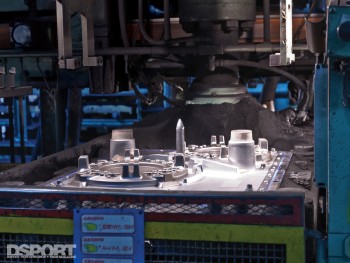Rules of Engagement
 When selecting a clutch-type, it’s important to consider the quality of the clutch’s engagement. Modifications to the pressure plate can directly affect pedal effort and make the clutch difficult to modulate. As previously noted, multiplate clutch systems tend to affect clutch modulation as the number of plates increase. Hence, a dual plate clutch will likely have smoother engagement than a triple-plate clutch system.
When selecting a clutch-type, it’s important to consider the quality of the clutch’s engagement. Modifications to the pressure plate can directly affect pedal effort and make the clutch difficult to modulate. As previously noted, multiplate clutch systems tend to affect clutch modulation as the number of plates increase. Hence, a dual plate clutch will likely have smoother engagement than a triple-plate clutch system.
Disc material also plays a role in clutch-engagement modulation. Organics and other materials with lower coefficients of friction can often be as smooth as stock to modulate, making them the choice for street-driven vehicles. Metallics and exotic materials with high coefficients of friction will tend to have harsher engagement qualities, but may still be manageable enough on the street.
Multi-pad single discs (often available in 3-pad, 4-pad and 6-pad configurations) will tend to be more aggressive in engagement quality over full-face configurations of the same material. The quality of the springs in the hub also have an effect, along with the material’s COF, on the existence of clutch chattering during engagement.
The Shifting Paradigm
There are two main factors that influence how easy it is to shift from gear to gear. The first is release. Release is described as the ability of the clutch system to separate the cover and the disc on disengagement to allow the disc to spin freely. The greater the amount of release, and the earlier it occurs in clutch pedal modulation, the easier it becomes to shift gears.
The second factor is the clutch disc’s mass and inertia. Heavier materials contribute to a greater overall mass, and this has a direct effect on the amount of rotational inertia the disc has. With a higher rotational inertia, the disc will have a greater tendency to maintain its rotational speed instead of naturally falling with engine speed. This generally makes it more difficult to shift gears quickly.
Clutch Use and Abuse
 When speaking of a clutch’s durability, we are referring to its ability to handle abuse. When a disc is slipped, the energy not transferred to the wheels is converted to heat which is retained in the clutch disc. In general, because of their materials ability to transfer heat, metallic and carbon clutches tend to excel. Some organic compounds, although embedded with metal fragments to facilitate heat dissipation, may not be able to shed the heat fast enough, causing the disc to glaze and lose torque-holding capacity.
When speaking of a clutch’s durability, we are referring to its ability to handle abuse. When a disc is slipped, the energy not transferred to the wheels is converted to heat which is retained in the clutch disc. In general, because of their materials ability to transfer heat, metallic and carbon clutches tend to excel. Some organic compounds, although embedded with metal fragments to facilitate heat dissipation, may not be able to shed the heat fast enough, causing the disc to glaze and lose torque-holding capacity.
Many factors will ultimately influence how long a clutch lasts. Heavy vehicles, extremely-high torque applications, vehicles with wider tires and aggressive and continual shifting will all contribute to reducing a clutch’s ability to perform. This is why it’s important to choose your clutch based on your particular application or expected use.





